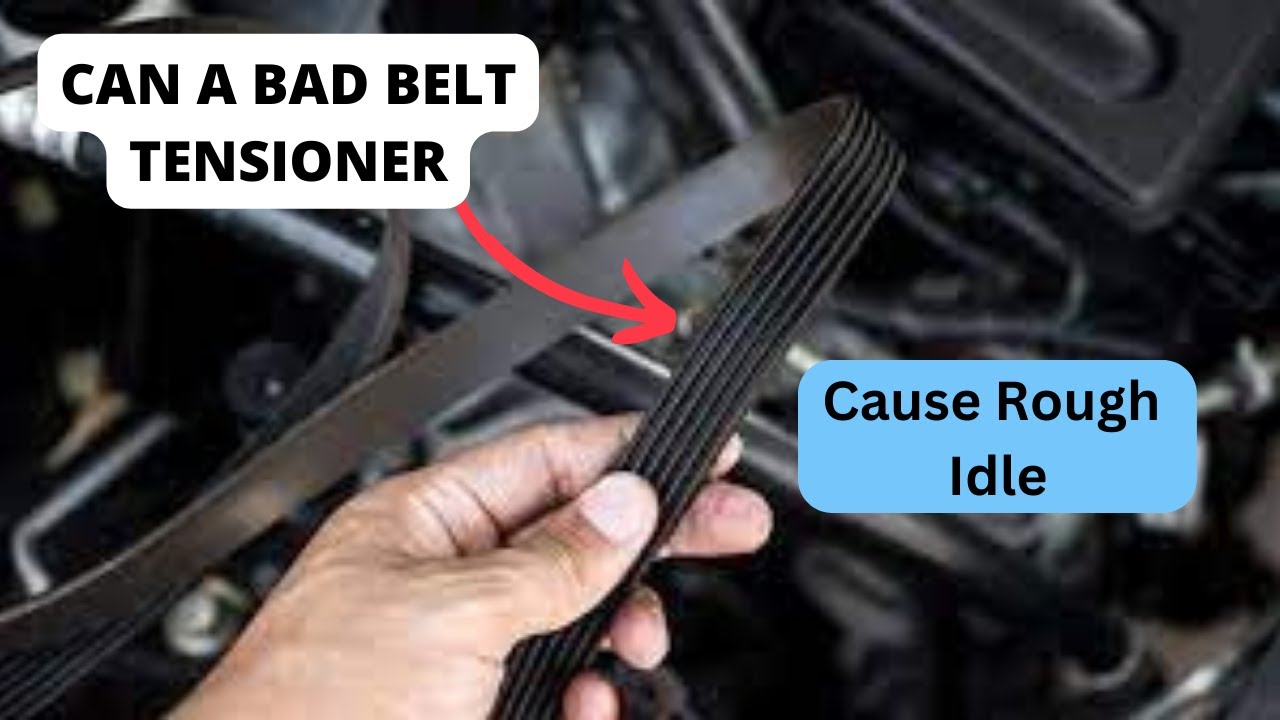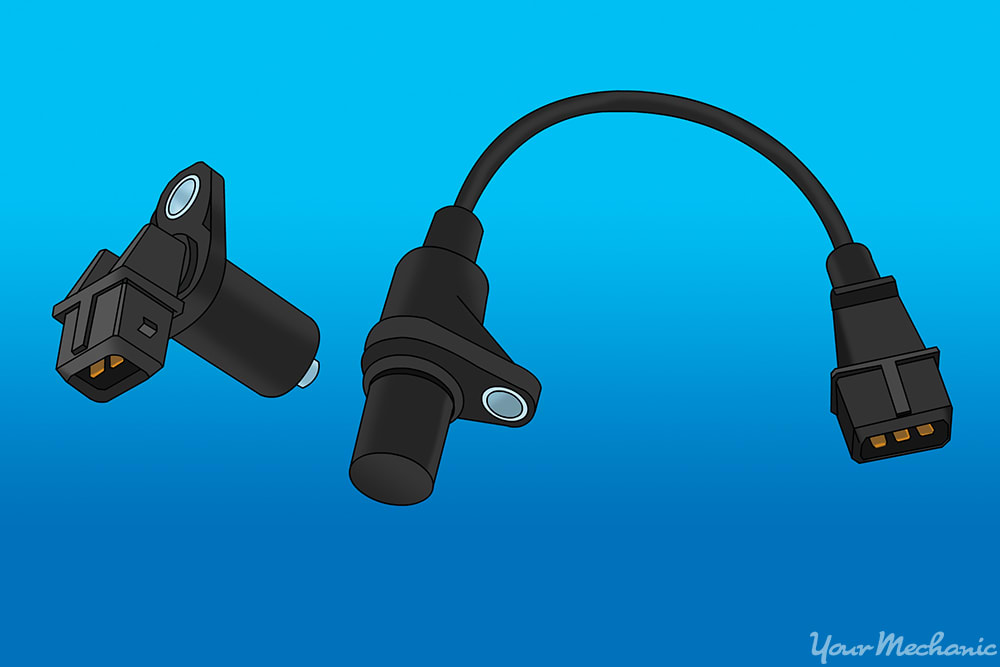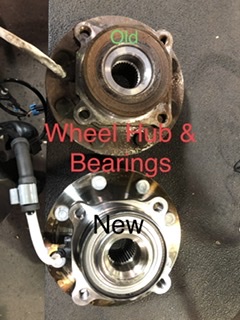Can a Bad Belt Tensioner Cause Rough Idle
Yes, a bad belt tensioner can cause rough idle by creating improper tension on the engine’s belts. This can lead to irregular accessory operation and engine misfires.
Vehicle maintenance is key to ensuring a smooth and efficient ride, and the belt tensioner plays a crucial role in this process. This small but significant component is responsible for maintaining the correct tension on the engine’s drive belts, which power auxiliary systems like the alternator, air conditioner, and power steering.
A faulty tensioner can lead to a series of engine-related issues, not least of which is rough idling. An engine that idles roughly might feel uneven or shaky, a problem that often points to underlying mechanical troubles. Recognizing the correlation between a bad belt tensioner and rough idle quickly can prevent more serious engine damage and maintain vehicle performance. It’s essential for drivers to address tensioner problems promptly to avoid a cascade of engine issues that can stem from this seemingly minor malfunction.
Symptoms Of A Failing Belt Tensioner
The belt tensioner plays a vital role in your vehicle’s performance. It maintains the belt’s tension, which is crucial for the proper operation of your car’s accessories. When this tensioner fails, it can cause a cascade of issues, including a rough idle. Understanding the symptoms of a failing belt tensioner can save you from unexpected breakdowns and expensive damages. Let’s explore the telltale signs indicating a problem with your car’s belt tensioner.
Unusual Noises Under The Hood
One of the first signs of a bad belt tensioner is strange sounds coming from under the hood. A tensioner in good condition should operate quietly. However, if you begin to hear a screeching, rattling, or chirping noise, it’s time to investigate. These sounds often suggest that the belt tensioner is no longer capable of keeping the belt taut, leading to slippage or vibration.
Visible Belt Wear And Tear
Regular inspection of the belt can reveal a lot about the health of the tensioner. Unusual belt wear, such as fraying edges, cracks, or glazing, often indicates that the belt isn’t being held firmly. A failing belt tensioner is likely the culprit. This lack of tension can also lead to a rough idle, as the slipping belt fails to drive the pulleys effectively.
Rough idle and accessory malfunction often follow these symptoms. Keep an eye out for these signs to prevent a minor issue from becoming a major headache.

Credit: m.youtube.com
Rough Idle Explained
Your car should purr like a kitten at a stoplight. When it shakes or stumbles, experts call this rough idle. This performance hiccup can signal a small problem or a hint at something more serious. Let’s explore what causes it and if a bad belt tensioner can be the culprit.
What Is Rough Idle?
A car’s engine runs smoothly when all parts work well. Rough idle occurs when a car vibrates or shakes and may sound louder than usual when stopped or when the engine runs at a low speed. It can cause worry and might lead to more car troubles if not checked.
Common Causes Of Rough Idle
- Spark plugs: Old or dirty spark plugs may misfire.
- Fuel injectors: Blockage or leaks disrupt fuel flow.
- Air filters: Clogged filters restrict air to the engine.
- Oxygen sensors: Failed sensors affect fuel and air mixture.
- Belt tensioners: A faulty belt tensioner may harm the engine’s rhythm.
Each car part works together like musicians in an orchestra. When one is off, the whole performance suffers. The timely replacement of these parts ensures smooth engine operation and a nice idle. Watching for early signs, like rough idle, helps prevent larger issues down the road.
Role Of The Belt Tensioner In Engine Performance
The belt tensioner, a critical component under the hood, plays a pivotal role in maintaining engine performance. Stable and smooth idling of the engine hinges on the proper function of the belt tensioner. A compromised tensioner can lead to rough idle, which affects the overall driving experience.
Function Of A Belt Tensioner
The belt tensioner ensures that the serpentine belt maintains adequate tension. It is crucial for driving the alternator, power steering pump, air conditioning compressor, and sometimes the water pump. By maintaining the right amount of tension, it prevents the belt from slipping or causing irregular movement that can negatively affect engine operations.
Impact On Ancillary Components
With a faulty belt tensioner, ancillary components suffer. These components rely on a consistent rotational force transmitted by the serpentine belt to function correctly. Attributes of a failing tensioner can include:
- Erratic tension that can cause vibrations
- Uneven wear on belts leading to frequent replacements
- An impact on the battery’s charge cycle and the electrical system’s reliability
Poorly managed belt tension also causes ripple effects on engine performance, one of which is rough idle. This rough idle stems from the erratic operation of essential engine accessories. Regular inspections can prevent these issues and ensure smooth engine operation.

Credit: www.reddit.com
Connecting Belt Tensioner Health To Rough Idle
Rough idle can perplex car owners. It’s that irritating shake when the car sits at a light. You feel it through your seat and wheel. It makes you wonder, “Is it serious?”. Often, a belt tensioner plays the villain in this plot. Let’s connect how a bad belt tensioner leads to rough idle.
Effects On Engine Harmony
Imagine an orchestra out of tune. That’s what happens to an engine with a bad belt tensioner. The belt ensures engine components sync. If tension fails, the harmony breaks. The alternator, water pump, and other parts dance to their rhythms. This mess leads to rough shakes when your car is idling.
Accessory Drive Strain And Consequences
A perfect belt tensioner keeps the drive belt taut. This reduces strain on accessories. When it goes bad, elements like the alternator work harder. This abnormal stress wears parts out faster. Such stress can mount into costly repairs. Early signs are audible – listen for squeals or chirps. These noises warn of the underlying tension issue.
- Key parts depend on belt tension.
- A failed tensioner can lead to damaged accessories.
- Timely replacement avoids bigger problems.
Diagnosing Belt Tensioner Issues
A car’s smooth performance depends on many factors, including a well-functioning belt tensioner. A faulty belt tensioner can lead to rough idling and other performance issues. Understanding the telltale signs of belt tensioner problems is crucial to maintaining your vehicle’s health.
Visual Inspection And Testing
Begin the diagnosis with a simple visual check of the belt tensioner. Look for signs of wear, such as cracks or fraying on the belt. Listen for unusual noises, which can indicate a misalignment or a failing tensioner pulley. To test the tension, press firmly on the belt. It should have only a slight give. A belt that has too much slack or is too tight signals tensioner trouble.
- Cracks or frays in the belt.
- Unusual sounds from the tensioner area.
- Proper belt tension is key to smooth operation.
Professional Diagnostic Tools
Mechanics employ advanced tools to diagnose tensioner issues thoroughly. These tools measure tension levels accurately and assess the pulley’s condition. Using specialized equipment, technicians verify if the tensioner maintains optimal belt tension. This ensures that all engine components connected by the belt function in harmony.
| Tool | Function | Benefit |
|---|---|---|
| Tension Gauge | Measures belt tension | Precise adjustments |
| Pulley Tester | Assesses pulley condition | Identifies wear and alignment issues |
Solutions For A Faulty Belt Tensioner
An engine’s smooth performance relies heavily on a properly functioning belt tensioner. If it fails, rough idle among other problems may arise. Let’s explore solutions to ensure your vehicle runs smoothly without any unexpected hiccups.
Repair Or Replace: Making The Right Choice
Diagnosing the issue with your belt tensioner is critical. Listen for squeaks or look for improper belt movement. Mechanics use special tools to check the tensioner’s condition. Based on this, a decision to repair or replace is made. Repairs may involve minor adjustments or component replacements. If wear is severe, replacement is the safer choice. A new tensioner assures proper belt tension, preventing rough idle and extending engine life.
| Signs of Faulty Tensioner | Repair | Replace |
|---|---|---|
| Minor Squeaking | Possible | Rarely Needed |
| Visible Wear | Limited | Often Required |
| Erratic Belt Movement | Inspect Pulley | Advised |
Preventative Maintenance Tips
Maintaining optimal belt tension can be easily overlooked yet it’s crucial for engine health. Follow these tips to prevent belt tensioner issues:
- Regular Inspections: Check belt tension and condition during routine maintenance.
- Belt Replacement: Replace the engine belt as suggested by the manufacturer’s guidelines.
- Tensioner Checks: Ensure the tensioner pulley spins freely and doesn’t wobble.
- Professional Advice: Seek help when you notice any irregularities. Early detection can save costly repairs.
By keeping these practices, you keep the tensioner functional and avoid engine issues like a rough idle.

Credit: www.clublexus.com
Frequently Asked Questions On Can A Bad Belt Tensioner Cause Rough Idle
How Does A Belt Tensioner Affect Engine Idle?
A malfunctioning belt tensioner can cause a serpentine belt to slack, leading to poor accessory performance. This can result in irregular accessory operation, especially the alternator, contributing to rough engine idle due to inconsistent electrical output.
Can A Bad Tensioner Pulley Cause Rough Idle?
Yes, a bad tensioner pulley can cause rough idle by hindering smooth belt movement. This disturbance in belt motion affects the operation of engine accessories, like the alternator and power steering, which can then manifest as rough idling of the engine.
What Symptoms Indicate A Failing Belt Tensioner?
Symptoms of a failing belt tensioner include unusual noises, visible belt wear or damage, engine overheating, and electrical issues. These signs can culminate in rough idle, as the engine accessories do not receive consistent power from the belt.
Is It Urgent To Replace A Defective Belt Tensioner?
Replacing a defective belt tensioner is crucial to prevent further engine damage. Neglecting it can lead to belt failure, resulting in a breakdown or severe damage to engine components, which can be costly and unsafe.
Conclusion
A faulty belt tensioner disrupts engine harmony, leading to rough idles and potential damage. Regular inspections prevent such issues. Remember, addressing a bad tensioner early maintains engine health and performance. Drive smooth, stay vigilant, and ensure your vehicle’s integral parts are functioning correctly for a reliable ride.




